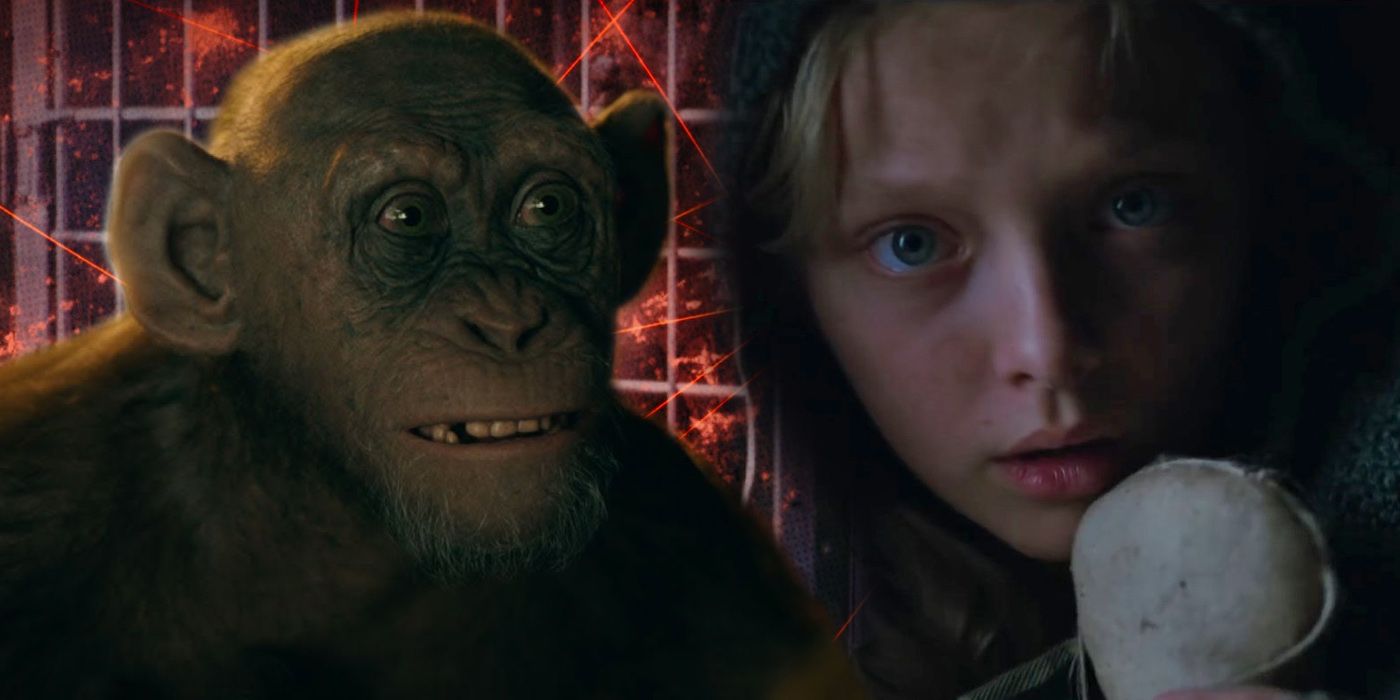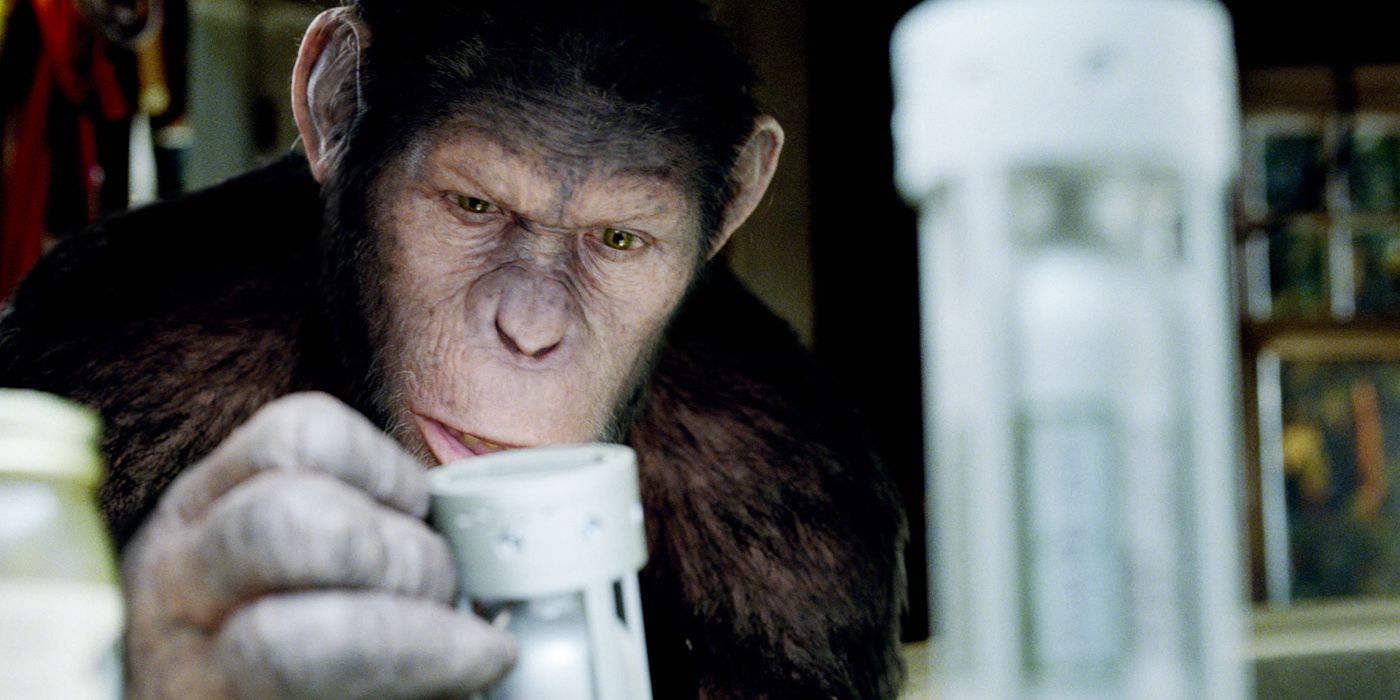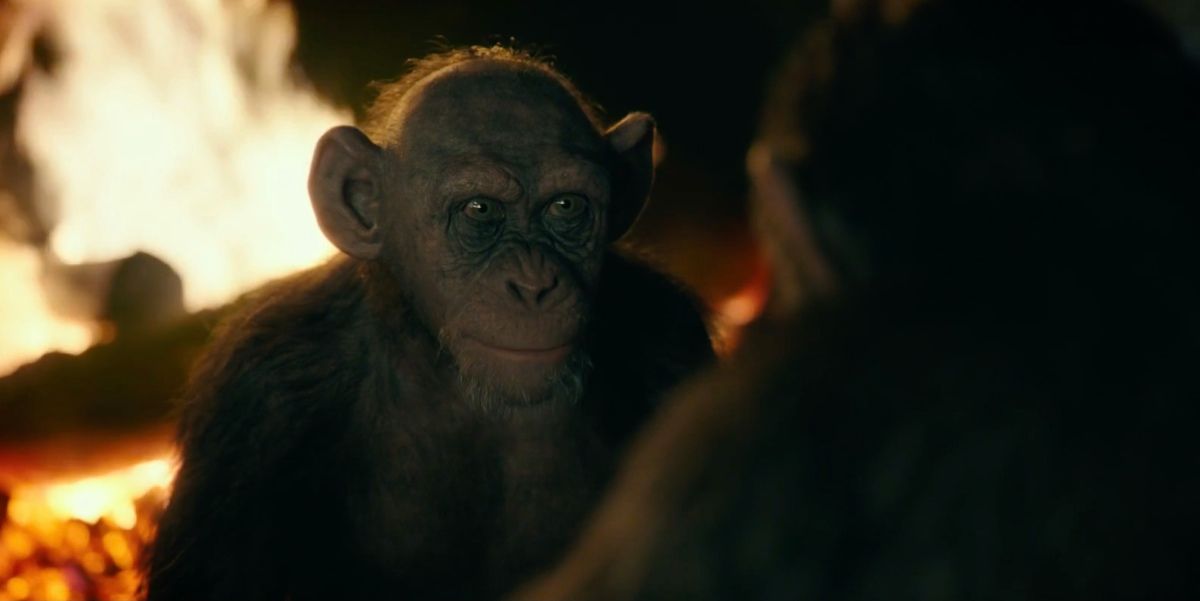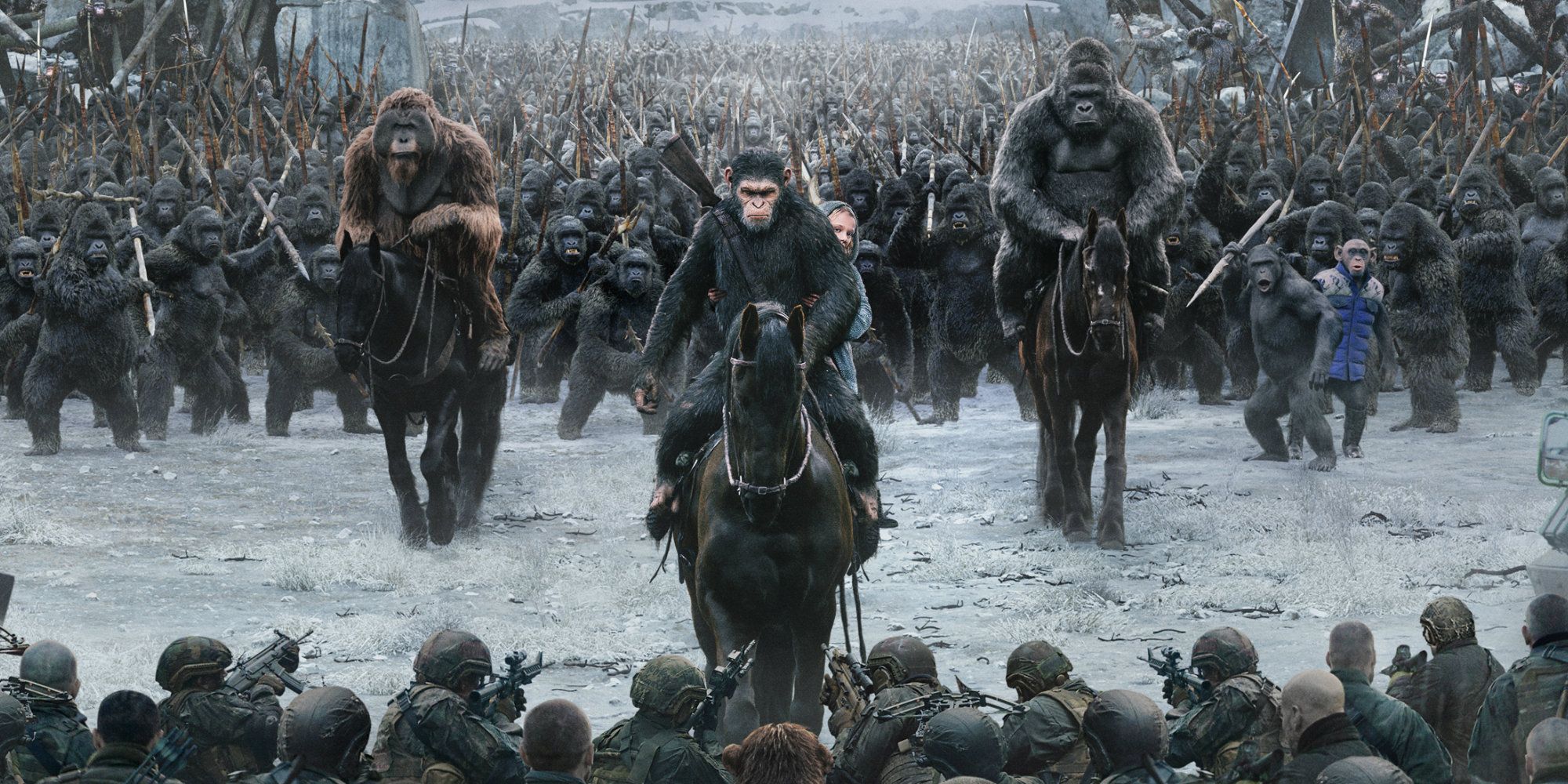Spoilers for War for the Planet of the Apes.
-
War for the Planet of the Apes is the epic end of the Apes prequel trilogy, yet it does more than just wrap up the past three movies. Of course, the main story is that of Caesar, Andy Serkis' scientifically-evolved chimpanzee trying to Moses his tribe through a land ravaged by man's self-destruction, but within that there's a lot of major honoring of the fifty-year-old series and some explanation of its biggest ideas that have been carefully dropped throughout the new series.
Indeed, while the Simian Flu, mute humans and Bad Ape may all appear to be random artifacts of a destroyed society and simple cogs of the climactic narrative, together they form an amazing backbone to the personal story at the forefront of the Apes prequels. It's easy to point to the work Serkis has done with directors Rupert Wyatt and Matt Reeves as the emotional core of these films, although perhaps their true brilliance lies in the handling of these secret elements. Let's take a deeper look.
Simian Flu Explained
In Rise, we were introduced to Will Rodman, James Franco's neurologically-focused chemist who was trying to find a cure for his father's Alzheimer's. The first drug, ALZ-112, was successful enough in increasing the brain function of chimp subject Bright Eyes to suggest human trials but was canceled when the ape went berserk trying to protect her child - the future revolutionary Caesar. What's important to note here is that there's nothing to suggest that 112 had negative human side effects; it was used secretly on Will's father, Charles, to initially great effects over the ensuing years. Over time, the Alzheimer's became resistant but Will managed to leverage development of a new version of the drug, which was tested on lifetime lab ape Koba. Caesar later used this when, having been sentenced to a primate shelter, to infect the other apes at the facility teaming up with the subjects in Will's lab and others from San Francisco Zoo to make a bid for Muir Woods.
Ostensibly ALZ-113 is the ape-smartening drug, but unlike 112 it is very dangerous to humans. One of the lab technicians is infected during Koba's experimentation and begins to fall ill, eventually dying - but not before infecting Will's neighbour, a pilot, who quickly spread the virus around the world. Ten years later, when we return to the world in Dawn, the entire planet has been torn apart; most of the population were killed and the survivors who have undefined immunity have been driven primitive under martial law, obsessed by survival, in-fighting, and fear of the ape threat - a threat born of the same virus that led to such a damaged humanity.
In War for the Planet of the Apes, two years later, things get interesting. Just as how ALZ-112 eventually couldn't stop the alzheimer's, ALZ-113 has begun to mutate and affect those immune in a much darker way. Instead of killing them, it reverses the original increasing of brain functions and turns humans into mute, unaware beasts - not a far step from the state of man in the 1968 classic.
In the original Planet of the Apes, before heading along the beach and finding a battered Lady Liberty, Taylor mused "a world where apes evolved from man? There must be an answer." In the middle of the Cold War, that solution was vague but alluded to be our impending nuclear apocalypse. In the 2010s that's not as prominent a threat (relatively), and so it's been updated to reflect our modern fears with scientific experimentation, yet through all the while the same arrogance and hubris is powering it. What War's done, however, is have the specific reason for why Caesar and co. became intelligent also be the explanation for man's fall - it's given a scarily elegant answer to Taylor's musings 49 years previously (or, rather, 2000 years in the future).
But there's another side to the Simian Flu and this connectivity - and it comes from a very unexpected source.
Next Page: [valnet-url-page page=2 paginated=0 text='Bad%20Ape%20And%20Other%20Ape%20Colonies%20Explained']
Bad Ape And Other Ape Colonies Explained
It had been assumed, at least unspoken, by the audience and characters that Caesar's band were the only apes around, a point Maurice explicitly makes in War. All the action has focused on the original group that broke out in Rise and their presumed descendants, with Dawn and War indicating they're a tribe of similar uniqueness as Gary Oldman's survivors or Woody Harrelson's soldiers. The natural progression of this was that the inhabitants of the future "Planet" were all the descendants of these original evolutions.
However, War reveals that to be untrue. As well as spreading through humans at an alarming rate, even in a viral form the Simian Flu still had a similar impact on apes of all description, giving them increased cognitive function. However, without the leadership of Caesar, who had been raised in a loving, human environment, their mental growth was stunted. Coming mainly from zoos and labs, their life experiences and language was dominated by those industries and aggressive treatment.
This is where we get to Bad Ape. Steve Zahn's eccentric chimpanzee started life as an exhibit in the Sierra Safari Zoo in Nevada when the Simian Flu hit. Adopting the term by which his handlers would use against him as his name, Bad Ape narrowly escaped containment when the sick and desperate humans began killing off all the chimps, in reaction to the Simian source of the disease and possibly the fear of Caesar's rebellion. He ran and eventually found himself on the West Coast, where he hid out scavenging what he could.
We now have several tiers of intelligent ape. There's Bright Eyes the original subject, her even more intelligent son Caesar, then Koba directly treated by ALZ-113, and the rest of the group who were given an unclear dosage, and finally this massive new set of apes who've come from the flu spread. We don't know what the true end game of this timeline is - although it's long been assumed we won't end up at the 1968 movie - but there's an inherent social class structure here that would be a very fitting parallel and definitely feels like where we'd be heading next.
This was alluded to in the lead-up to release when Matt Reeves stated that Bad Ape was the future of the franchise. At the time it felt he was meaning Zahn himself was an essential character, but in light of the mythology addition it's more what he represents and where that leads the series. The future is the expansion of Caesar's now safe community into the discovery of these other pockets of apes and the conflict and growth that comes with that. On a more immediate note, putting Caesar's group as the trendsetters, though, is the payoff to the legend of the first ape to say "no" from the original Planet of the Apes, while the hints of conflict suggest we'll be seeing the race parallels that defined the future Earth so much (Chimpanzees, Gorillas and Organg-utans did not get on) come to life.
Wherever Planet of the Apes is going from Caesar's death is unknown at this point, but through the three-movie Simian Flu arc, and especially how War diversifies it, it's safe to say Reeves has put all the pieces in play for true monkey rule to rise.





